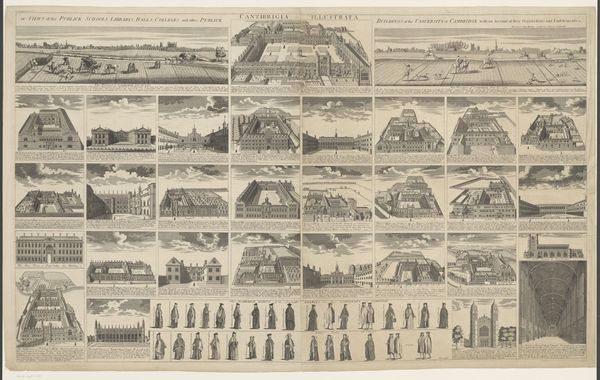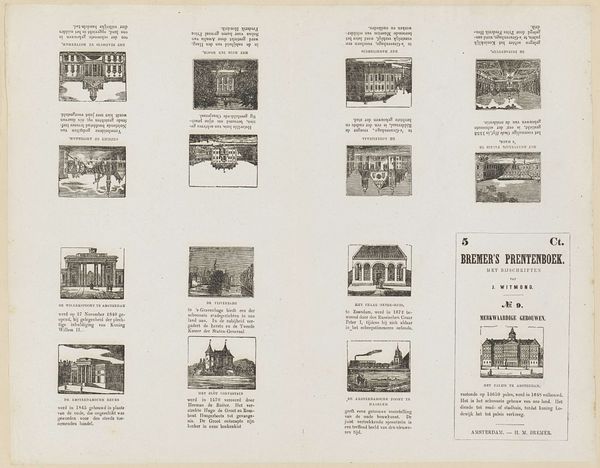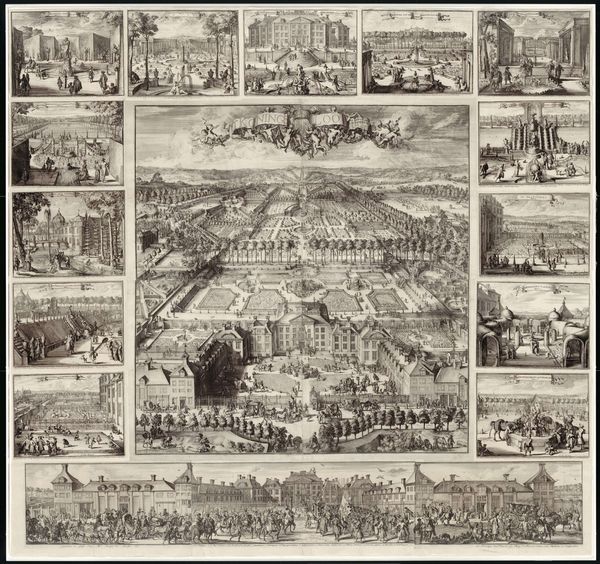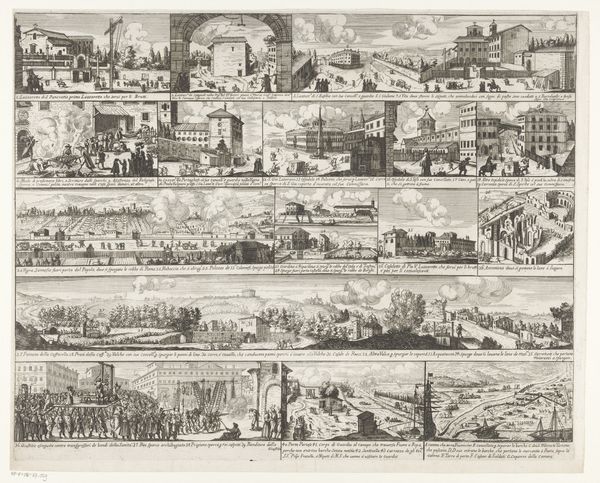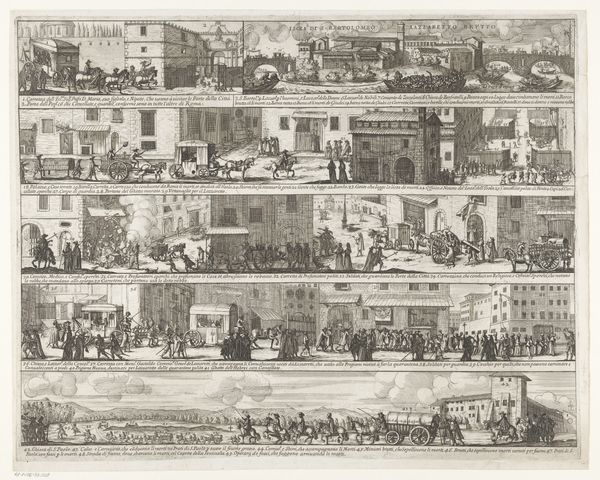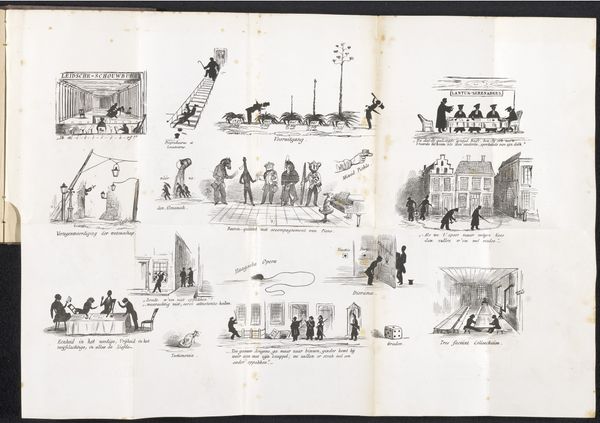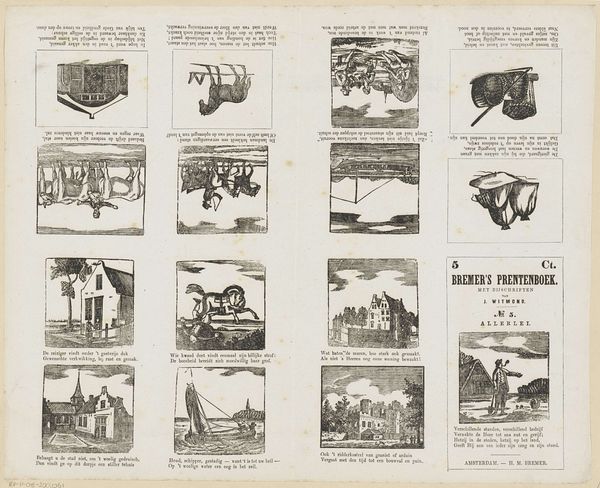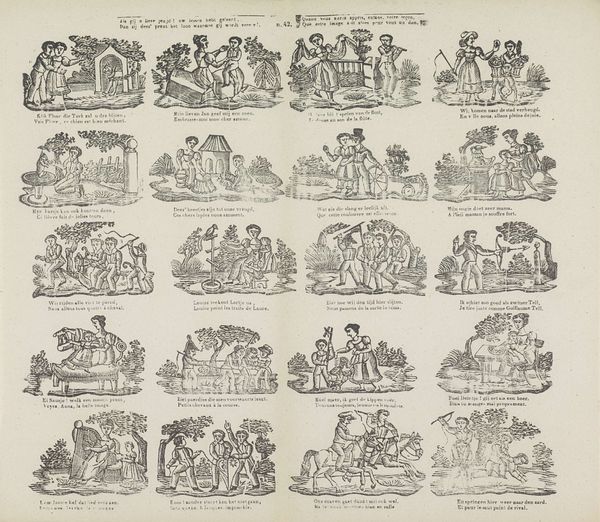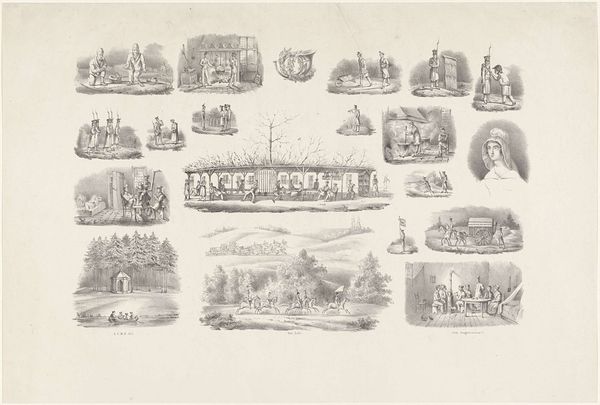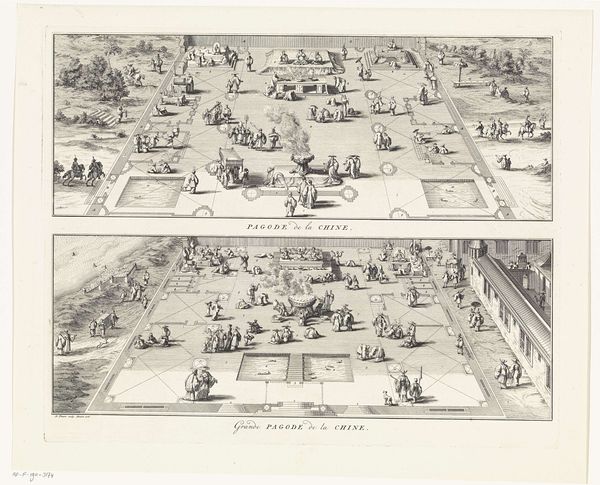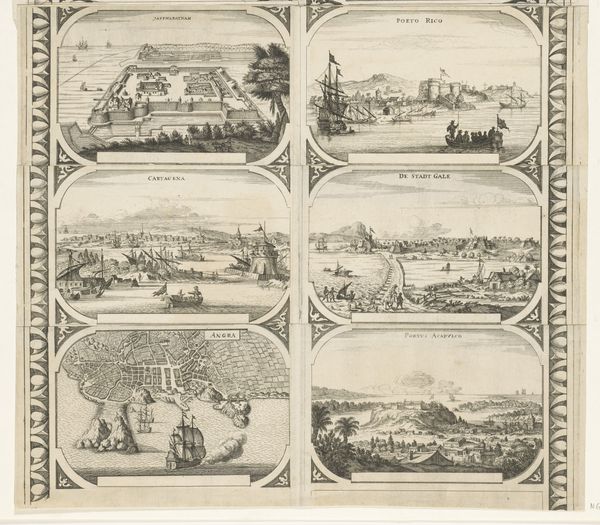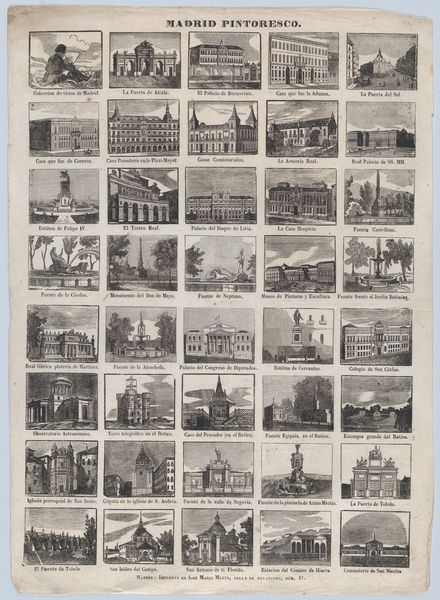
drawing, print, ink, engraving, architecture
#
drawing
#
baroque
# print
#
ink
#
engraving
#
architecture
Dimensions: height 583 mm, width 962 mm
Copyright: Rijks Museum: Open Domain
Curator: This print by David Loggan, entitled 'Views of the Bodleian Library, the Theatre, Public Schools, Colleges, Halls and other Public Buildings of the University of Oxford', created between 1643 and 1692, presents a fascinating, comprehensive survey of Oxford University’s architectural landscape. Editor: It's striking how formal and measured it feels. Almost like a family photo, everyone lined up stiffly but undeniably *there*. The sheer number of buildings gives it a sense of contained energy, if that makes any sense? Curator: Absolutely! It is essentially an architectural portrait gallery. Each individual image is rendered with precision, demonstrating Loggan's meticulous engraving technique. Beyond a mere visual record, the print served to showcase the power and prestige of the University during a period of significant social and political change in England. Editor: The uniformity intrigues me, though. Are we meant to see them as equal parts of a whole, or is Loggan hinting at hierarchies within the University structure through their placement? Are some more prominent, grander, more important? Curator: That's a keen observation. Consider the location of Christ Church or the Bodleian Library, given a certain amount of space... It's likely a combination of both, reflecting their relative importance within the University's ecosystem and purely a choice that relies on aesthetic quality and symmetry. The ordered presentation provides a sense of stability, but Loggan must have had some notion of order, as it isn't wholly democratic. Editor: You can almost hear the whispers of ambition echoing from these stone facades, though! These aren't just buildings; they are the silent witnesses to centuries of scholarship, power struggles, and the relentless pursuit of knowledge. There's something potent about compressing all of that into a single sheet. Curator: And the figures beneath! Each distinguished according to profession and college. It makes me wonder what David Loggan's place would be within all this order. As artist and chronicler, he positions himself outside of it, while entirely embedded. Editor: Precisely! That tension is what makes the print so compelling, at least for me. The formal structure reveals underlying currents of power and intellectual fervor, all neatly contained, yet visibly brewing. I'll have to find a comfy spot to study up on that place! Curator: Perhaps, that is where David Loggan wanted us to focus; in what may occur behind those stone walls... Thank you for sharing your insight.
Comments
No comments
Be the first to comment and join the conversation on the ultimate creative platform.
